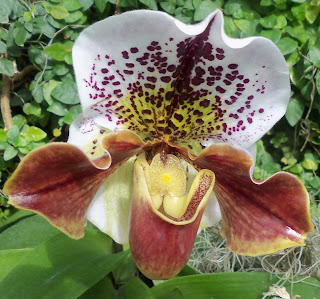It’s March 1, and if you are like me, you are probably…
reviewing books and catalogs;
looking at others’ gardens;
tidying up the ruins and residues of winter;
searching for signs of life under leaves and mulch;
and finalizing your wish list of plants and projects to add to the garden.
Whether your garden is established or you are just breaking ground, there is always something to do. And you have to decide, what can I accomplish? Where do I start? Where can I find what I need? And how much will it cost?
 |
| "Plants in waiting"... I sometimes grow perennials in large containers until I can find a spot for them in the garden. |
I have about two more weeks to finalize priorities. (This time of year kind of has the frenzy of an all-night exam cram!) And one of the things I’m taking into account is the Department of Agriculture’s new Plant Hardiness Zone Map.
The map was unveiled in January and compiled from almost 30 years of data. The first thing you might notice is that the map is interactive and best used online. You can view and download static maps of your state, your geographic region and the whole country. But you can also find your hardiness zone by zip code.
Because the map was created with GIS technology, it includes greater, in fact, truer detail, especially in urban areas and communities close to natural features that often affect winter weather. So, large cities, like New York and Chicago, or even Pittsburgh and Portland, now belong to warmer zones than their surrounding vicinities. For example, Manhattan, previously 6B, is now 7A; downtown Chicago, previously 5B, is now 6A; parts of Pittsburgh, previously 6A, are now 6B; and Portland, Oregon, previously 8A, is now 8B.
The map shows that many communities immediately around the Great Lakes enjoy milder winters than their neighbors just 15 to 50 miles “inland”. Leadville, Colorado, at an elevation of over 10,100’, is in Zone 4B, while Aspen, Colorado, at an elevation near 7,900’, is in Zone 5B, even though they are about 30 miles apart as the crow flies. And in the past, the landscape around Brownsville was always lumped with the rest of southeastern Texas. It is now distinguished as Zone 10A. The new map also provides more definition to our tropical zones of Hawaii and Puerto Rico, which now include Zones 12 and 13 instead of maxing out at Zone 11. Of course, gardeners in these locales have probably experienced and recognized these subtle differences for years.
It’s important to remember the “coldest” temperatures listed for each zone are not the coldest possible temperature for that region. They are averages of the coldest temperatures recorded at each location from 1976 to 2005. So, you still need to watch daily temperatures during the winter for out-of-the-ordinary cold snaps, particularly if you are trying to grow plants at the limits of their hardiness.
Definitely, check out the new Plant Hardiness Zone Map before purchasing plants this spring. My guess is that this updated information will influence what is available at your local garden center. And who knows? Maybe you could be growing a wider range of plants than you realized. I think all gardeners love to hear that!































